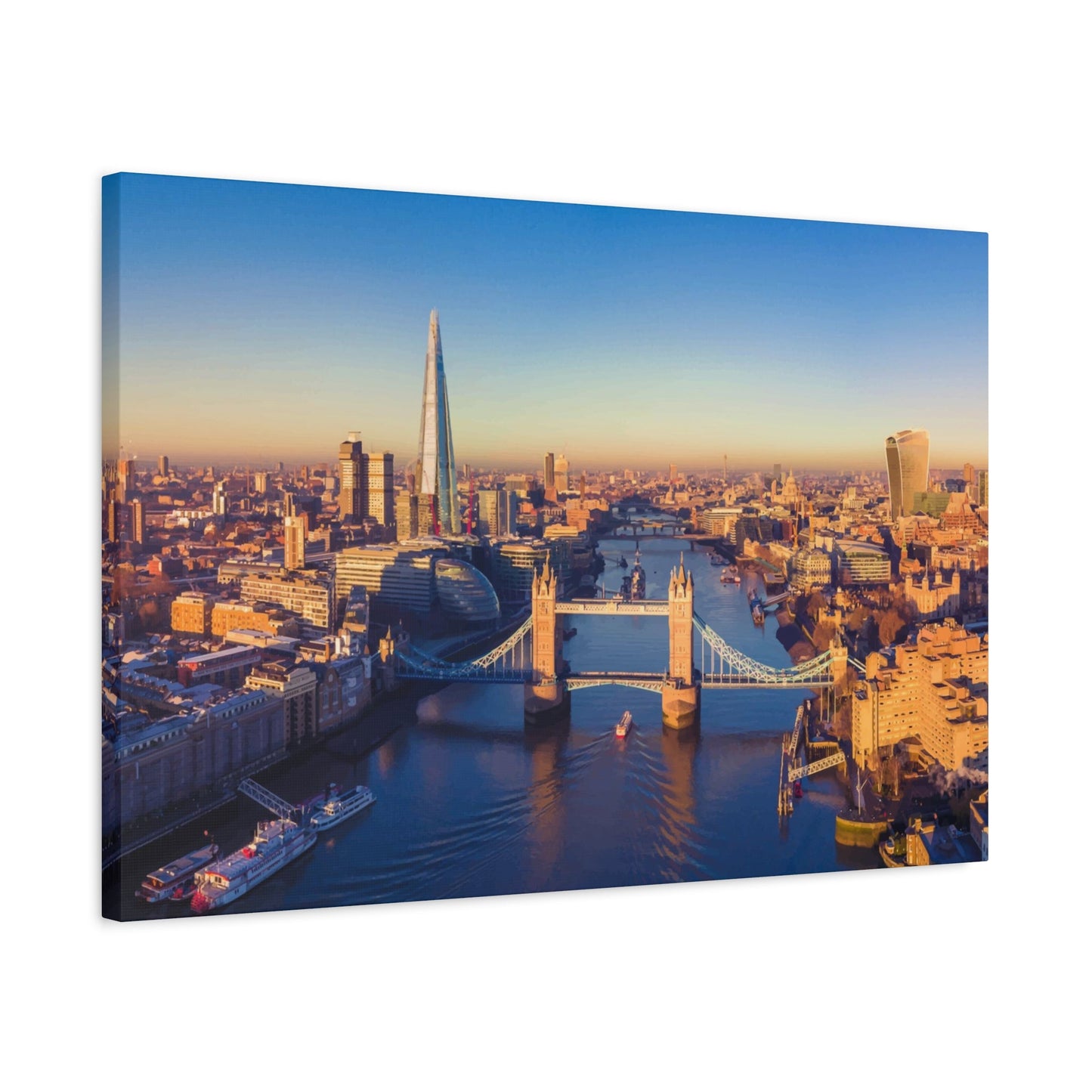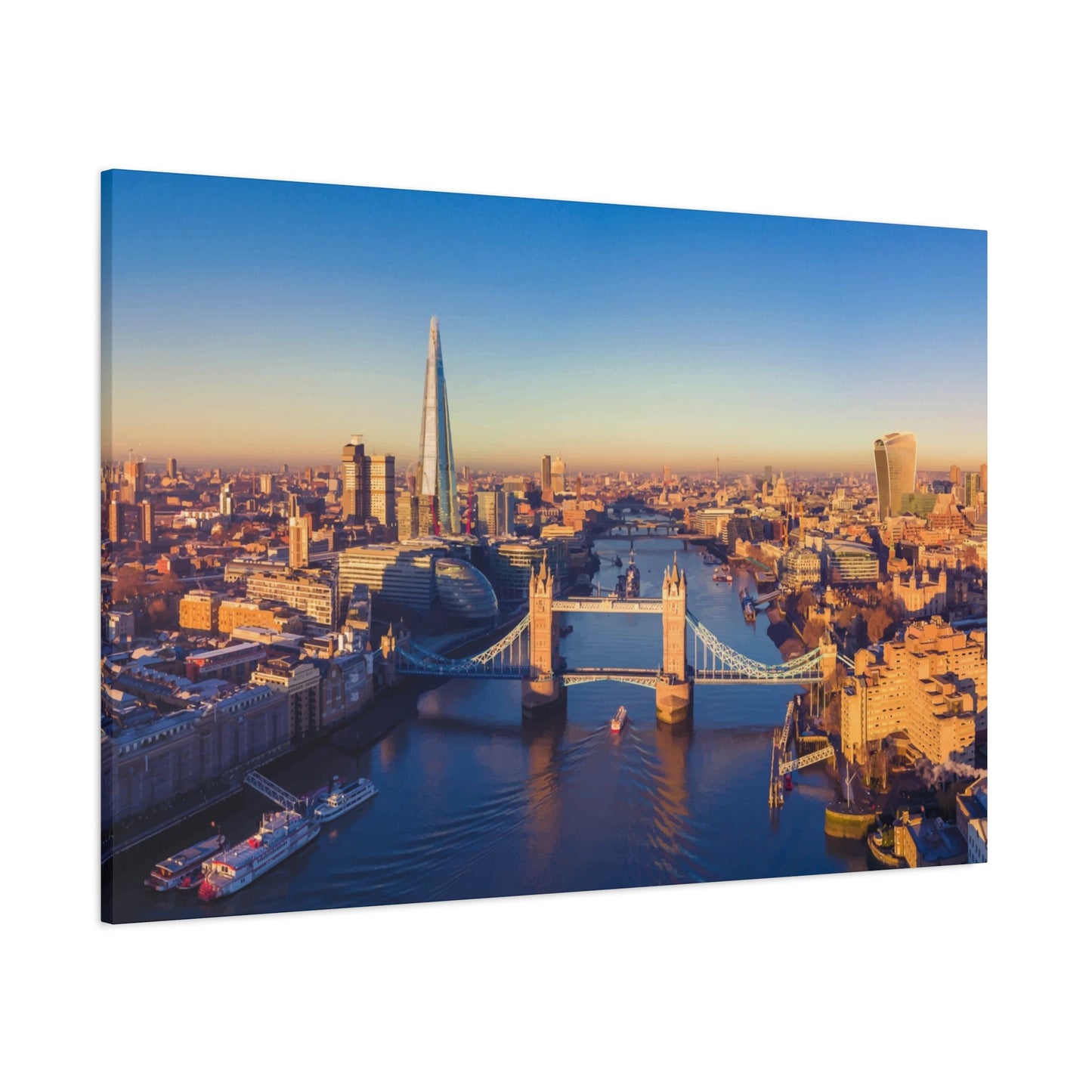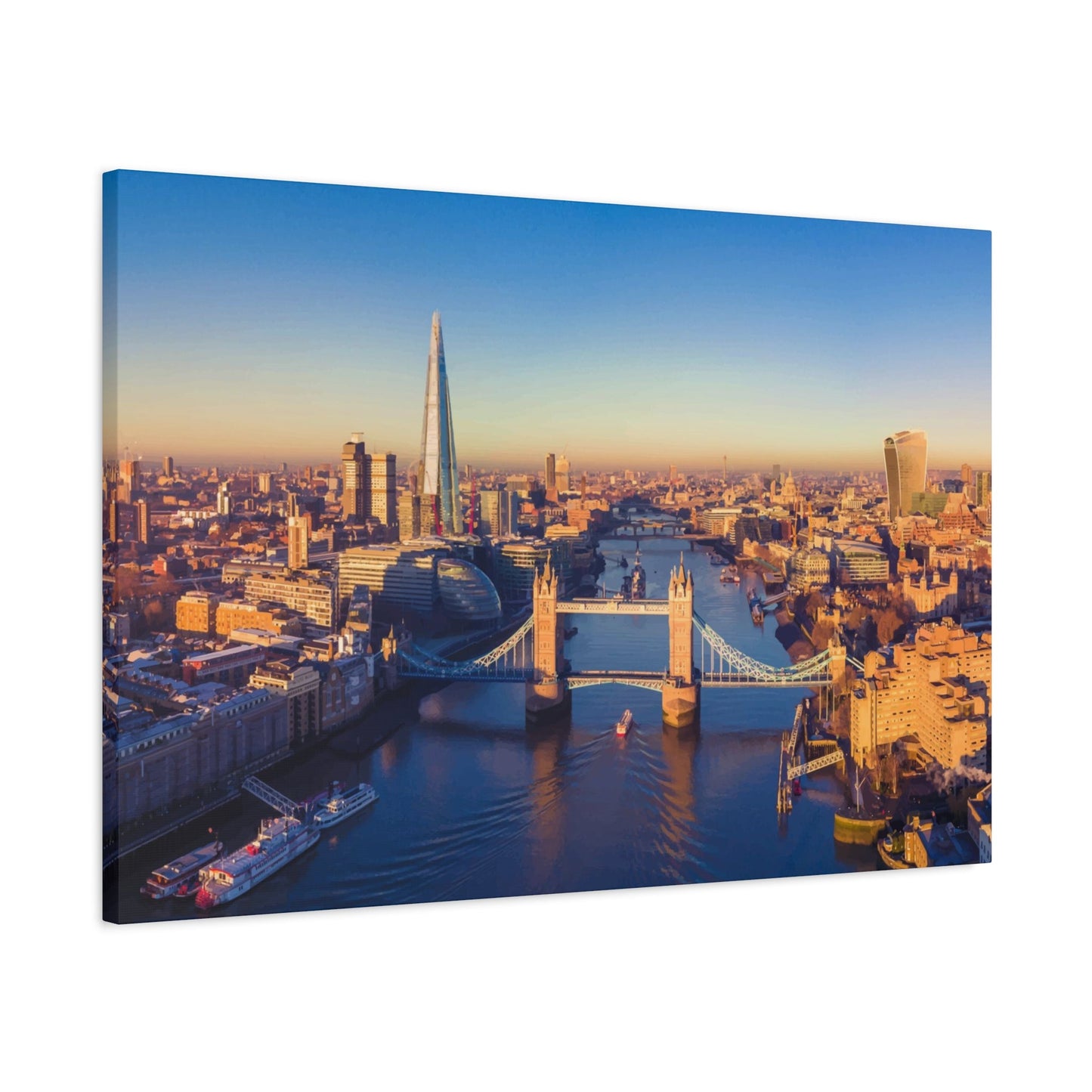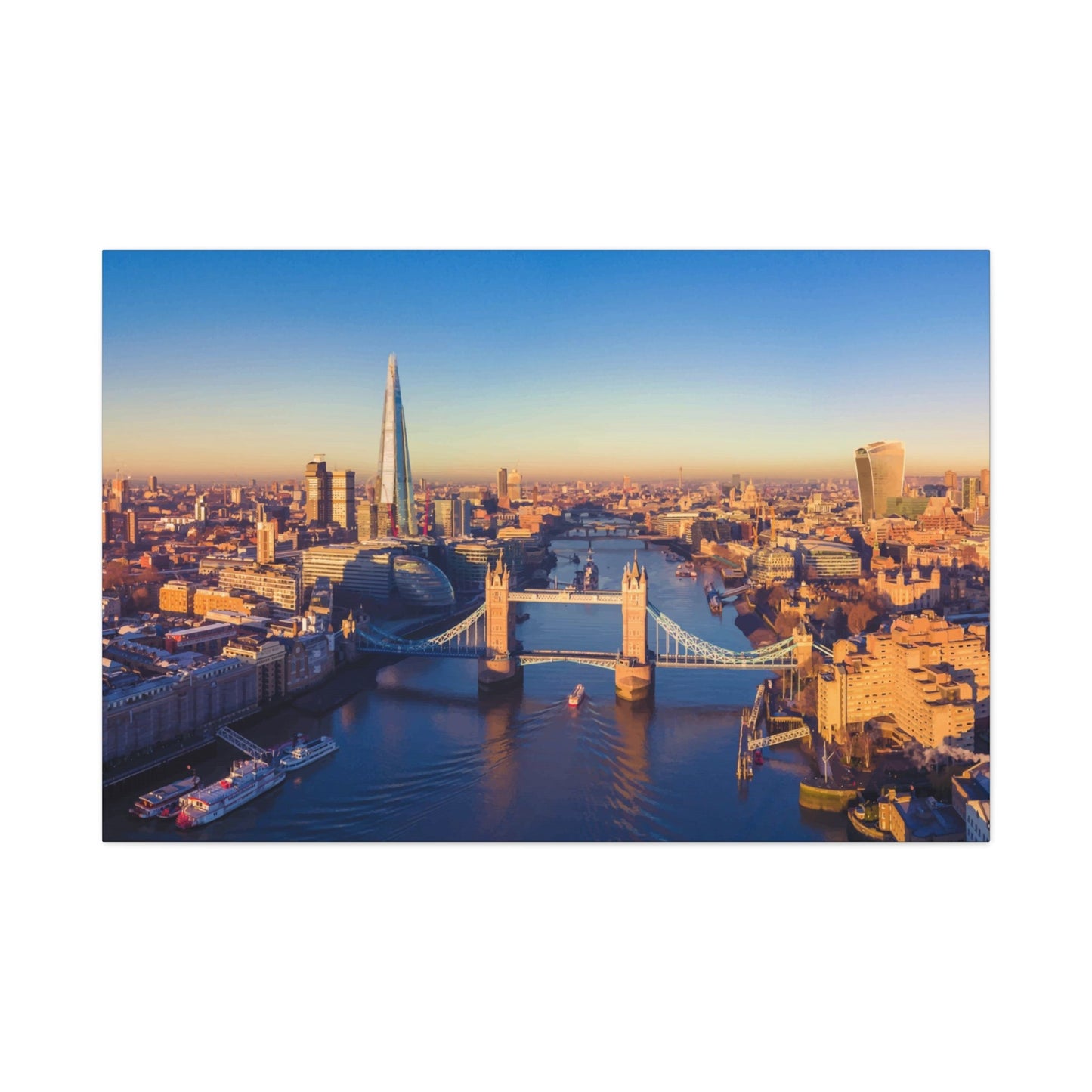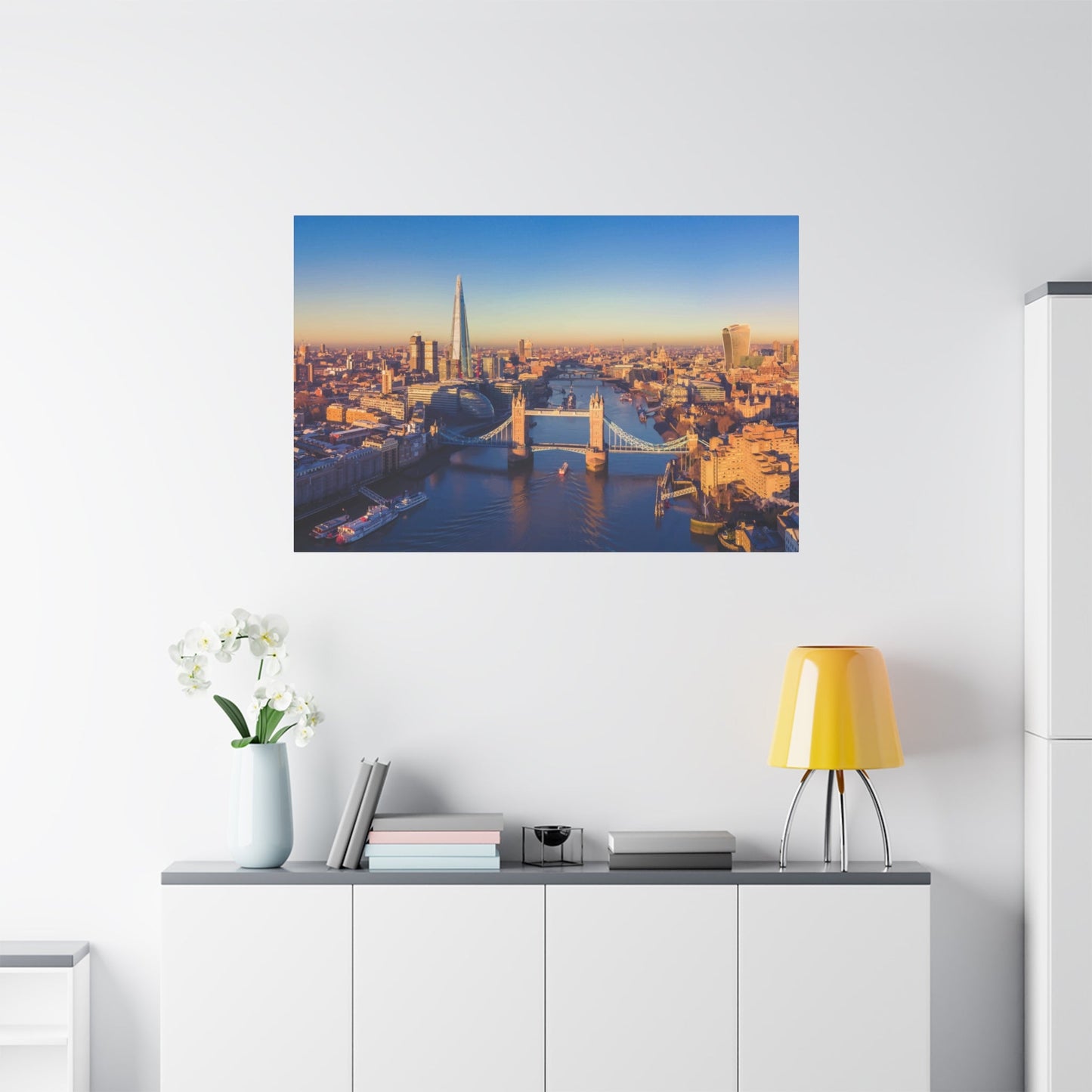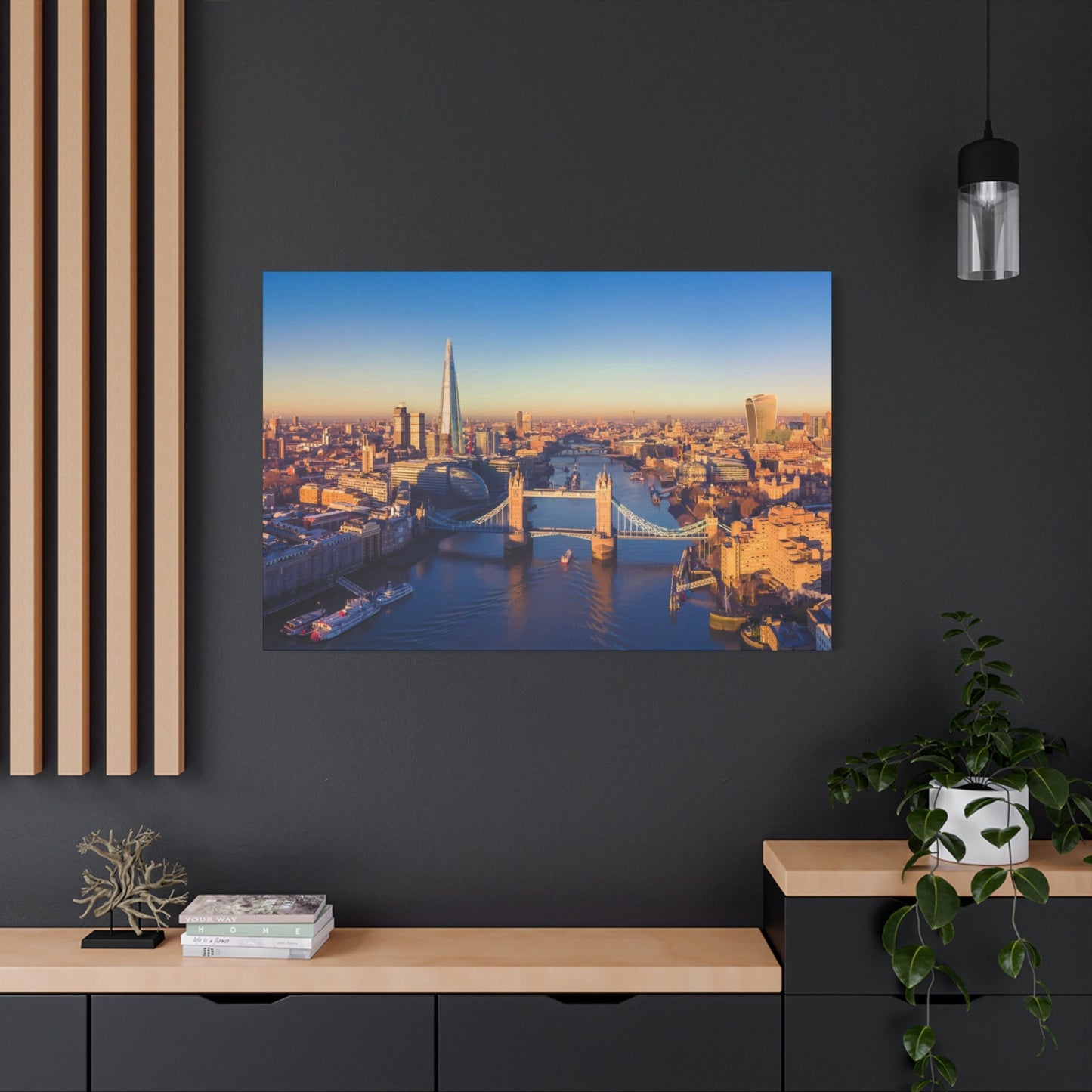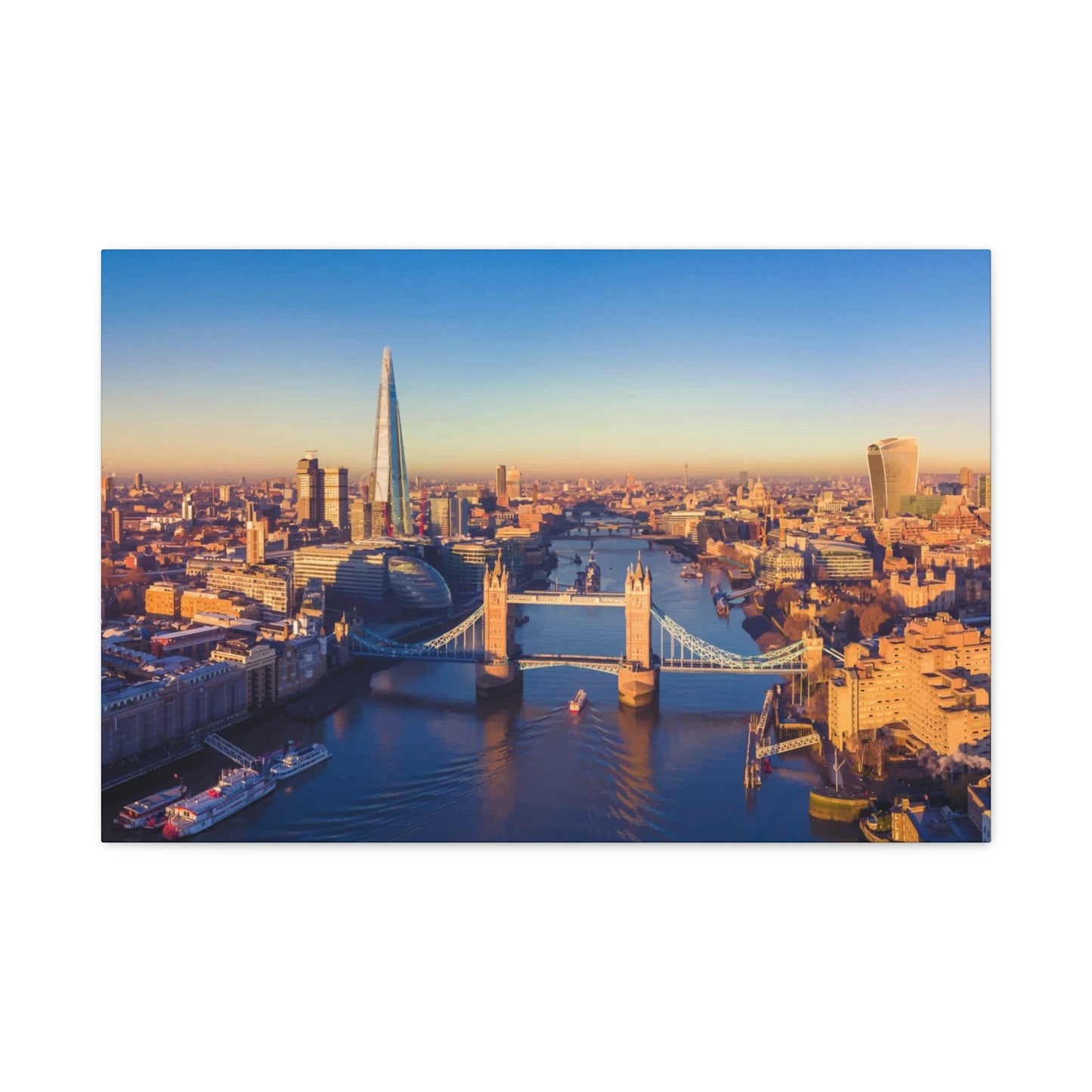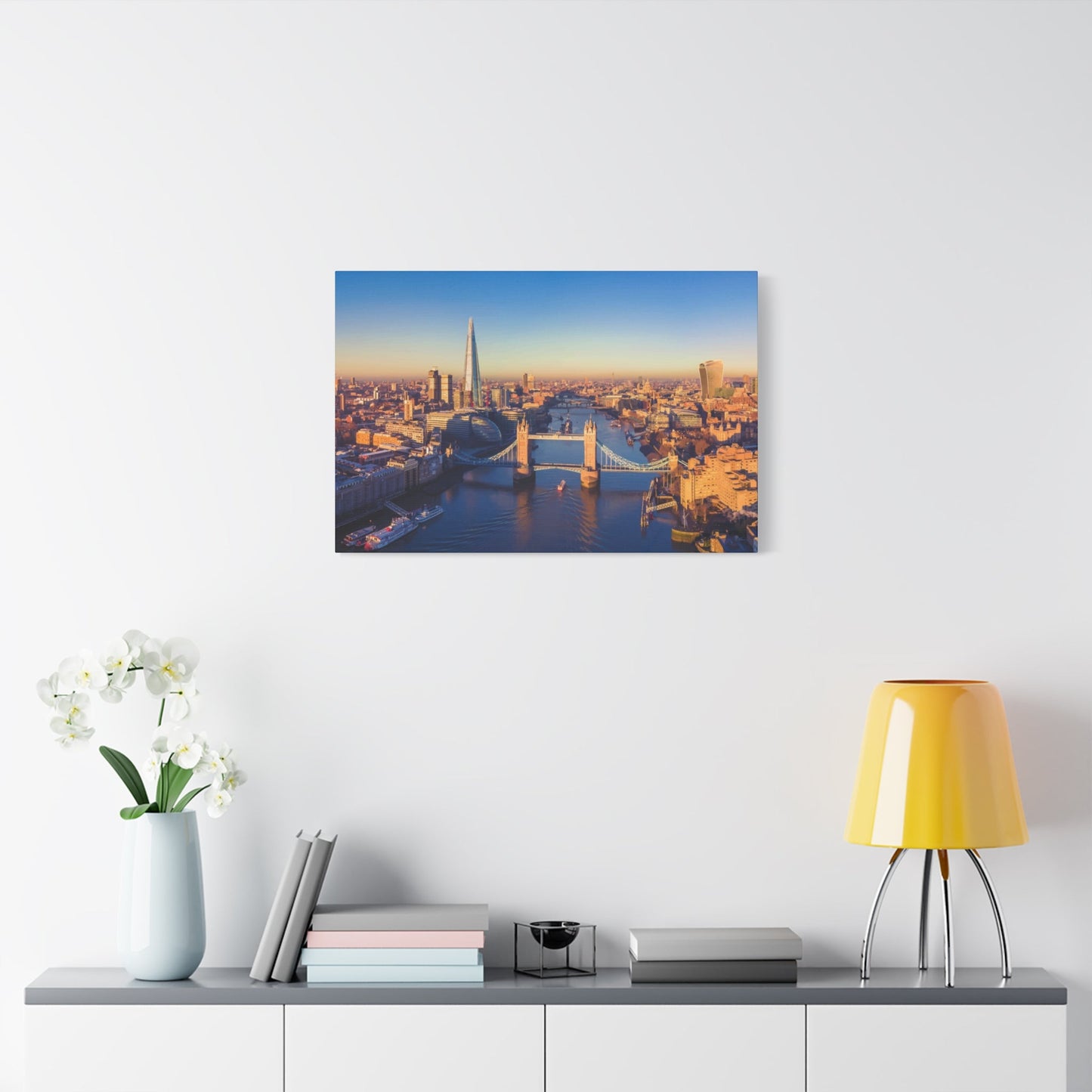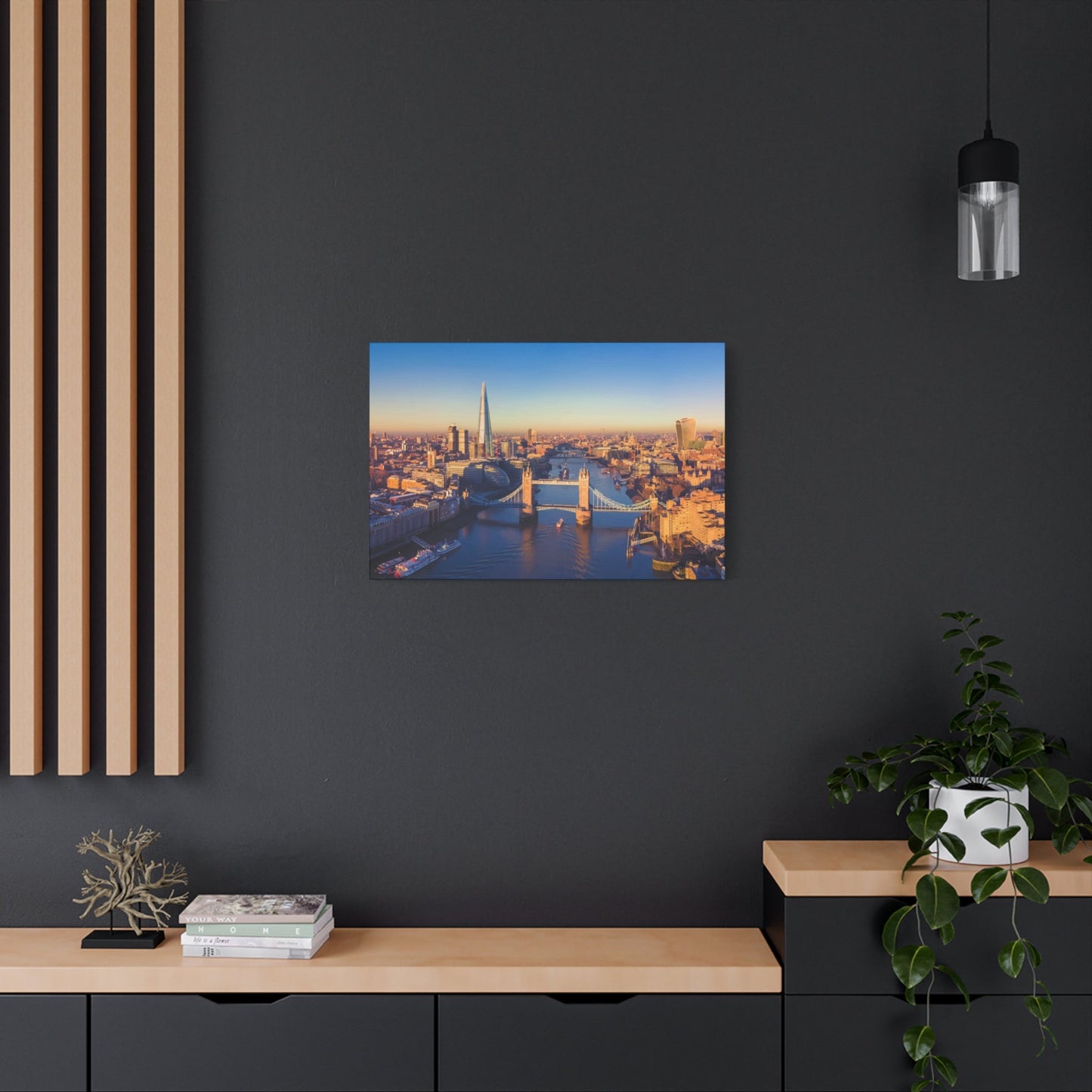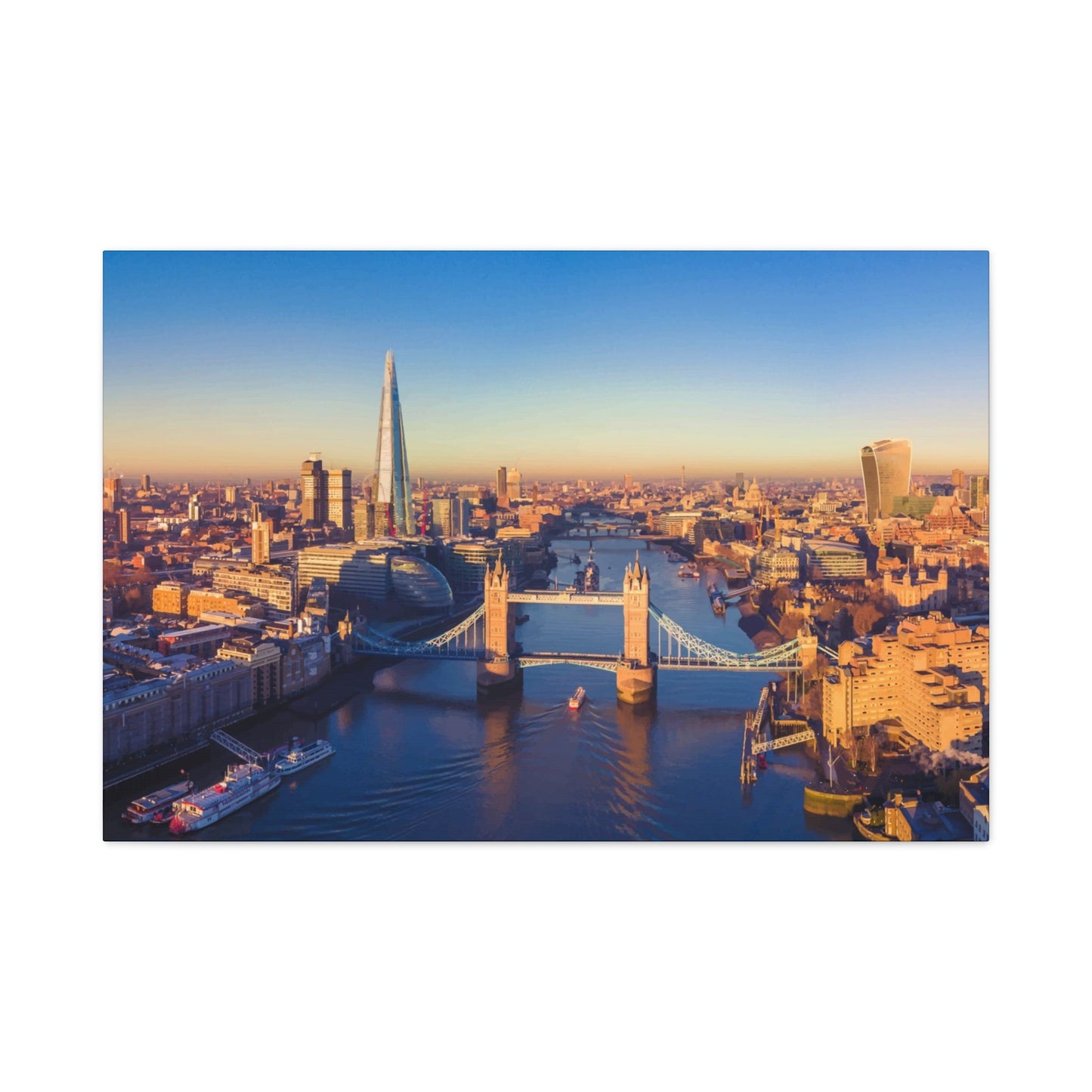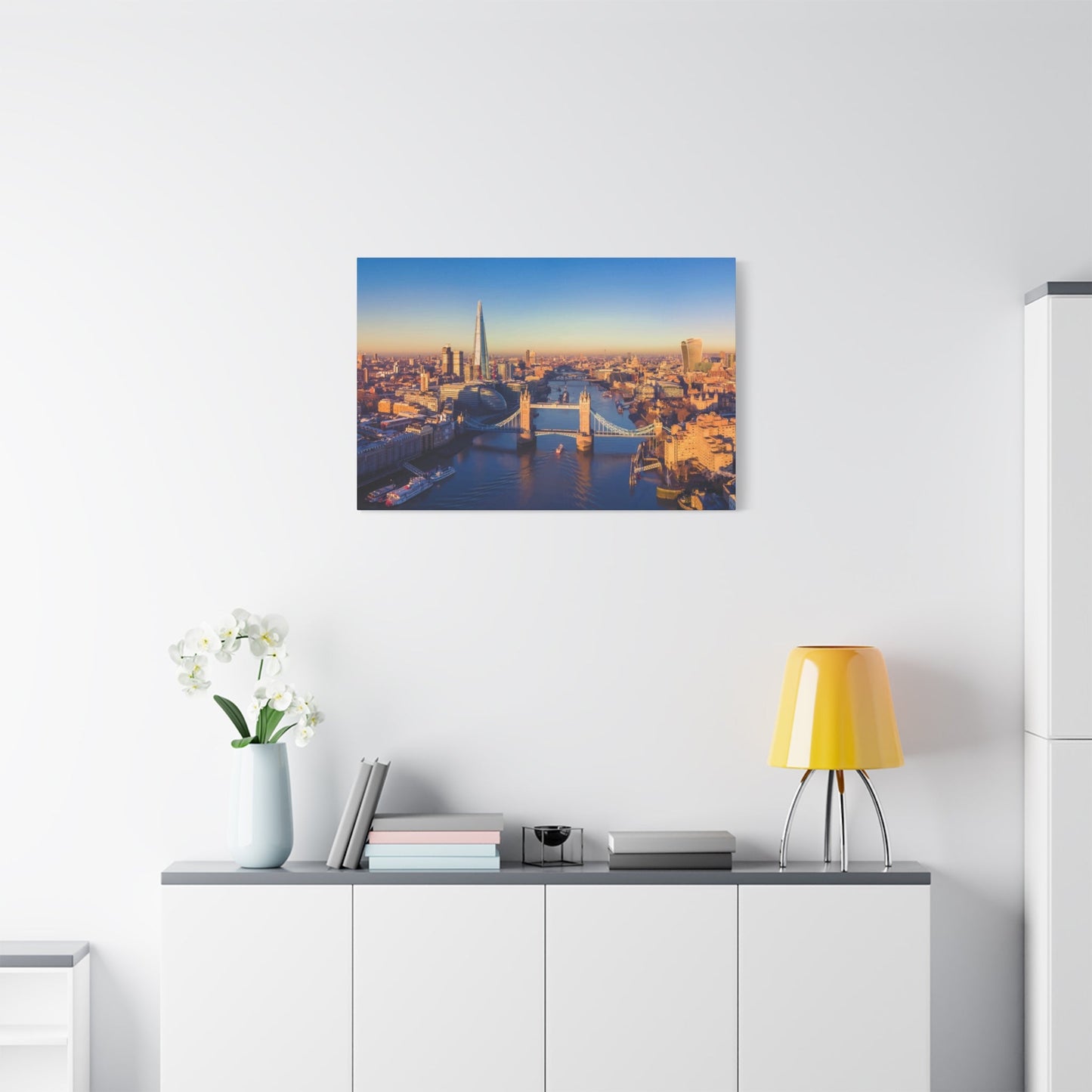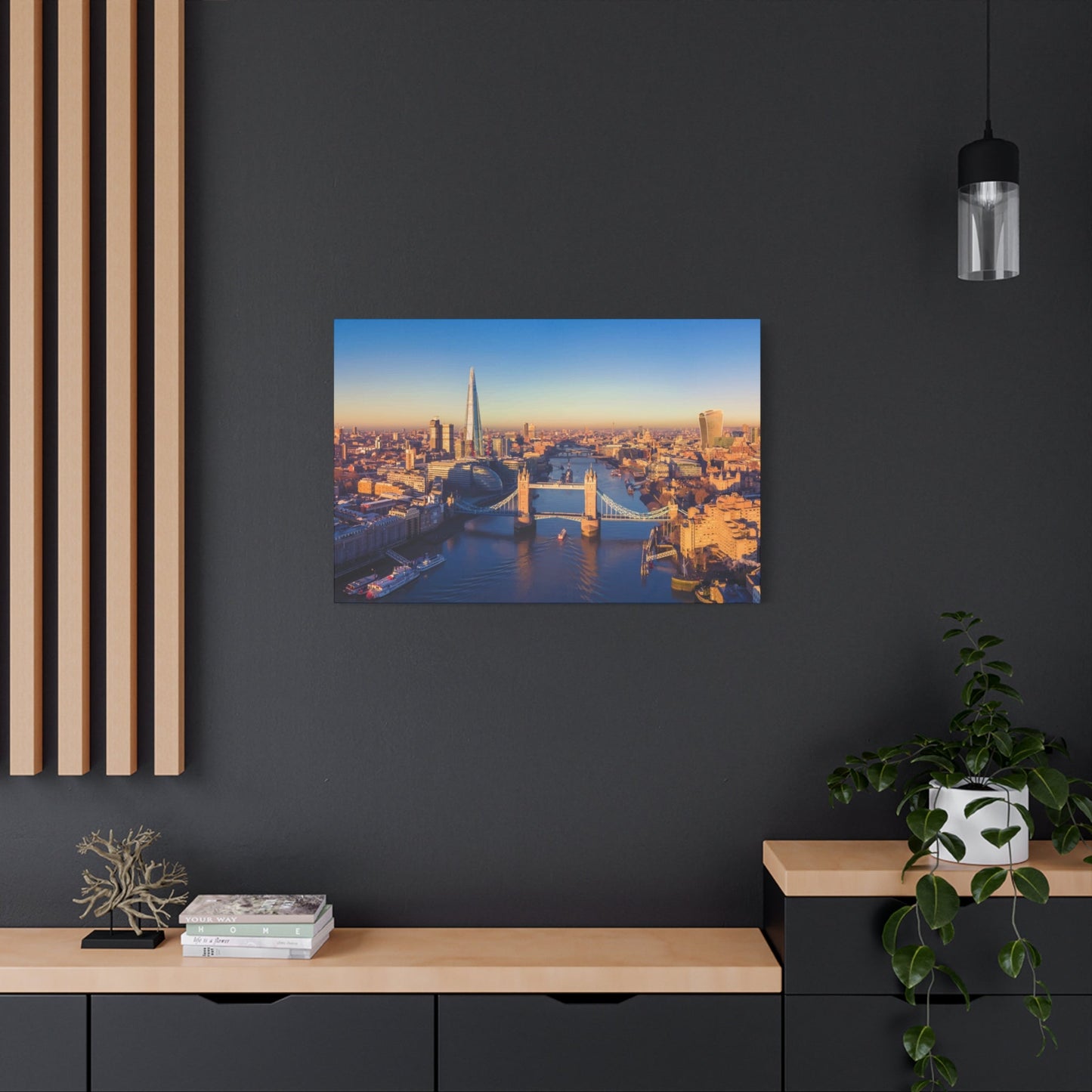Artistic Canvas Wall Art: Embracing the Serenity and Charm of London’s Riverside
London's magnificent waterways have long captivated artists, photographers, and design enthusiasts worldwide. The serpentine Thames and its tributaries weave through the heart of Britain's capital, creating breathtaking vistas that translate beautifully onto canvas. These artistic interpretations offer homeowners an exceptional opportunity to bring the essence of London's aquatic landscape directly into their living spaces.
The appeal of riverside canvas art extends far beyond mere decoration. These pieces serve as windows to one of the world's most iconic urban waterways, capturing moments of tranquility amidst the bustling metropolis. Whether showcasing the gentle morning mist rolling across the water's surface or the dramatic silhouettes of historic bridges against twilight skies, these artworks possess an inherent ability to transform any interior environment.
Canvas prints featuring London's waterways offer remarkable versatility in home decoration. Their natural color palettes typically incorporate soothing blues, grays, and earth tones that complement virtually any existing decor scheme. The horizontal orientation of most river scenes naturally draws the eye across the composition, creating an illusion of expanded space that particularly benefits smaller rooms or areas with limited natural light.
The emotional impact of these artistic pieces cannot be understated. Rivers symbolize continuity, flow, and life itself, making them particularly meaningful choices for personal spaces. When featuring London's waterways specifically, these artworks carry additional cultural significance, representing centuries of history, trade, and human activity that have shaped one of the world's greatest cities.
Modern printing technologies have revolutionized the quality and accessibility of canvas art. High-resolution digital reproduction ensures that every detail of the original photograph or artwork is preserved, from the subtle ripples on the water's surface to the intricate architectural details of riverside buildings. This technological advancement means that homeowners can enjoy museum-quality reproductions at fraction of the cost of original artworks.
The therapeutic qualities of water imagery make these pieces particularly suitable for spaces designed for relaxation and contemplation. Studies in environmental psychology suggest that viewing images of natural water features can reduce stress levels and promote feelings of calm and well-being. When combined with London's architectural grandeur, these effects are enhanced by the cultural associations many people have with this historic city.
Enhancing Residential Spaces with Thames-Inspired Canvas Art
The integration of London's waterway imagery into home environments requires thoughtful consideration of both aesthetic and practical elements. These canvas pieces work exceptionally well as focal points in living rooms, where their horizontal format naturally complements standard furniture arrangements such as sofas and entertainment centers. The key to successful placement lies in understanding how the artwork interacts with existing lighting conditions and color schemes.
Natural lighting plays a crucial role in how these canvas prints are perceived throughout the day. Morning sunlight might enhance the cooler tones typically found in river scenes, while afternoon light could bring out warmer undertones in architectural elements. This dynamic quality means that the same piece can appear subtly different at various times, adding an element of living beauty to the space.
When selecting sizes for residential display, consider the viewing distance and surrounding elements. Larger pieces work well in spacious rooms where viewers can step back to appreciate the full composition, while smaller formats might be more appropriate for intimate spaces or as part of grouped displays. The rule of thumb suggests that artwork should occupy roughly two-thirds to three-quarters of the wall space above furniture pieces.
The framing and mounting options for canvas prints significantly impact their final appearance and longevity. Gallery-wrapped canvases, where the image extends around the edges of the frame, create a modern, finished look that eliminates the need for traditional framing. This approach works particularly well with contemporary and minimalist interior styles. Alternatively, traditional framing can add formal elegance and help integrate the piece with more classical decor schemes.
Color coordination between the artwork and existing room elements enhances overall harmony. London's waterways naturally provide neutral color palettes that serve as excellent foundations for room design. The blues and grays of water scenes can be echoed in throw pillows, curtains, or accent pieces, while the warmer tones of historic buildings can be reflected in wood furniture or metallic accessories.
Lighting considerations extend beyond natural sources to include artificial illumination. Picture lights, track lighting, or strategically placed lamps can dramatically enhance the visual impact of canvas art, particularly in spaces with limited natural light. The goal is to illuminate the artwork evenly without creating glare or harsh shadows that might detract from the viewing experience.
The psychological impact of water imagery extends to creating sense of movement and flow within static interior spaces. Rivers naturally lead the eye through the composition, encouraging visual exploration and creating dynamic tension that prevents spaces from feeling stagnant or overly formal. This quality makes waterway art particularly effective in areas where people spend extended periods, such as living rooms or home offices.
Creating Sophisticated Ambiance with River Landscape Canvas Displays
Professional interior designers frequently turn to waterway landscapes when creating sophisticated, calming environments that appeal to diverse tastes. These scenes possess inherent elegance that transcends temporary design trends, making them excellent long-term investment pieces for home decoration. The timeless quality of water imagery ensures that these artworks remain relevant and appealing regardless of changing fashion preferences.
The scale of presentation significantly influences the emotional impact of river landscapes. Large-format prints can create immersive experiences that transport viewers mentally to the depicted location, while smaller pieces might serve as subtle reminders of peaceful waterside moments. Understanding this relationship between size and psychological effect helps in making appropriate selections for different room functions and atmospheres.
Seasonal variations in London's waterways provide rich material for artistic interpretation. Spring scenes might feature fresh green foliage reflected in calm waters, while autumn displays could showcase the golden hues of changing leaves along the riverbanks. Winter compositions often emphasize the stark beauty of bare trees and gray skies reflected in dark water, creating dramatic, moody atmospheres suitable for more contemplative spaces.
The architectural elements typically featured in London waterway art add layers of cultural and historical significance to these pieces. Iconic bridges, historic buildings, and modern skyscrapers create visual anchors that give context to the natural water elements. This combination of natural and built environments reflects the complex relationship between urban development and natural features that characterizes great cities like London.
Technical considerations in canvas selection include understanding different material qualities and their impact on image reproduction. High-quality cotton canvas provides excellent texture and durability, while poly-cotton blends might offer enhanced resistance to environmental factors such as humidity. The choice between matte and satin finishes affects how light interacts with the surface, influencing both the viewing experience and the piece's integration with room lighting.
Professional mounting and stretching ensure that canvas prints maintain their appearance over time. Proper tensioning prevents sagging or warping that could detract from the image quality, while appropriate backing materials provide support and protection. These technical aspects, while often invisible to viewers, significantly impact the longevity and professional appearance of the finished piece.
The versatility of waterway themes allows for creative clustering and grouping arrangements. Multiple pieces featuring different perspectives or times of day along the same waterway can create narrative sequences that engage viewers over time. Alternatively, contrasting seasons or lighting conditions can provide visual variety while maintaining thematic coherence.
Artistic Focal Points for Contemporary Living Areas
Modern living spaces benefit tremendously from the introduction of well-chosen artistic elements that serve as conversation starters and visual anchors. London's waterways, with their perfect blend of natural beauty and urban sophistication, provide ideal subject matter for creating these focal points. The horizontal nature of most river scenes naturally complements the linear arrangements typical of contemporary furniture design.
The color psychology of water imagery plays a significant role in its effectiveness as living room art. Blue tones are associated with tranquility, trust, and stability, making them excellent choices for spaces designed for relaxation and social interaction. When these cool tones are balanced with warmer architectural elements often found in London scenes, the result is a harmonious palette that feels both calming and engaging.
Placement strategies for living room art require careful consideration of viewing angles and traffic patterns. The primary viewing position typically corresponds to the main seating area, but successful pieces also reward examination from secondary positions throughout the room. This multi-perspective appeal is particularly strong in river landscapes, where different vantage points can reveal new details and compositional elements.
The integration of technology in modern homes presents both opportunities and challenges for art display. Wall-mounted televisions, sound systems, and smart home devices must be considered when planning art placement. Waterway canvases often work well in creating visual balance around technological elements, their organic forms providing pleasing contrast to the geometric precision of electronic devices.
Seasonal decoration strategies can incorporate waterway art as permanent foundations around which temporary elements are arranged. The neutral tones typical of London river scenes provide stable backgrounds that accommodate changing accent colors and decorative themes throughout the year. This approach maximizes the investment value of quality canvas art while allowing for creative seasonal expression.
The social aspects of art selection become particularly important in living areas where guests are entertained. London's waterways carry positive associations for many people, whether through personal travel experiences, cultural familiarity, or aspirational connection to this world-class destination. These associations can serve as natural conversation starters and help create welcoming atmospheres for visitors.
Maintenance considerations for living room art include protection from direct sunlight, which can cause fading over time, and positioning that minimizes exposure to airborne particles from cooking, heating, or other household activities. Canvas prints generally require minimal maintenance, but understanding these factors helps ensure long-term appearance quality.
The investment value of quality waterway art extends beyond immediate aesthetic benefits to include potential appreciation over time. Well-executed pieces by recognized photographers or artists can maintain or increase their value, making them both decorative and financial assets. This dual nature makes careful selection particularly important for pieces intended for prominent living area display.
The Aesthetic Appeal of Thames Waterway Imagery in Interior Design
The Thames River system represents one of the world's most photographed and artistically interpreted waterways, providing an inexhaustible source of inspiration for interior design applications. Its journey through London creates countless opportunities for artistic interpretation, from the industrial landscapes of the eastern reaches to the manicured beauty of the western suburbs. Each section of the river offers distinct aesthetic qualities that can complement different interior design approaches.
Historical significance adds depth to Thames imagery that extends beyond pure visual appeal. The river has been central to London's development for over two millennia, serving as highway, defensive barrier, trade route, and cultural symbol. This rich history infuses modern artistic interpretations with layers of meaning that can enhance the intellectual and emotional appeal of interior spaces.
The seasonal transformation of Thames landscapes provides designers with options for creating different moods and atmospheres. Summer scenes featuring pleasure boats and lush vegetation create feelings of warmth and activity, while winter compositions showcasing fog-shrouded bridges and bare trees evoke contemplation and mystery. Understanding these seasonal variations allows for strategic selection based on desired room ambiance.
Architectural diversity along the Thames offers remarkable variety for artistic interpretation. Medieval towers, Victorian bridges, Georgian terraces, and ultra-modern skyscrapers create visual contrast and historical depth that can complement virtually any interior design style. This architectural richness distinguishes Thames imagery from generic waterway art and provides specific cultural context that many viewers find engaging.
The technical challenges of photographing and reproducing Thames scenes have driven innovations in both capture and printing technologies. The often challenging British lighting conditions require sophisticated techniques to achieve balanced exposures that capture both sky detail and water surface textures. Modern digital processing and high-quality canvas printing have made these technically demanding images more accessible for home decoration.
Professional landscape photographers who specialize in Thames imagery often develop signature styles that can be matched to specific interior design requirements. Some focus on architectural elements and urban geometry, while others emphasize natural beauty and atmospheric effects. Understanding these different approaches helps in selecting pieces that align with overall design philosophies and room functions.
The psychological impact of Thames imagery draws from both universal responses to water scenes and specific cultural associations with London. For many viewers, these images evoke memories of visits, films, literature, or historical knowledge, creating personal connections that enhance the emotional value of the artwork. This multi-layered appeal makes Thames art particularly effective in spaces where personal meaning and aesthetic beauty are both important.
Incorporating London's Aquatic Landscapes into Modern Home Decoration
Contemporary home decoration increasingly emphasizes the integration of natural elements with urban sophistication, making London's aquatic landscapes particularly relevant for modern interior design applications. These scenes represent the perfect marriage of metropolitan energy and natural tranquility, qualities that many homeowners seek to incorporate into their personal spaces.
The minimalist movement in interior design finds excellent expression through carefully selected waterway art. The clean lines of water surfaces, the geometric forms of bridges and buildings, and the subtle color palettes typical of London river scenes all align with minimalist principles while providing necessary visual interest and emotional warmth. This compatibility makes such artwork valuable for spaces that might otherwise feel sterile or impersonal.
Open floor plans, common in modern homes, benefit from artwork that can be appreciated from multiple vantage points and distances. River landscapes naturally accommodate this requirement through their layered compositions that reveal different details based on viewing position. Foreground elements might be apparent from nearby, while background architecture becomes more prominent from across the room.
The trend toward biophilic design, which incorporates natural elements into built environments, finds perfect expression in waterway imagery. Even though these scenes include significant urban elements, the presence of water provides the natural component that many people crave in their living spaces. This connection to nature, even in stylized form, can contribute to improved well-being and stress reduction.
Smart home technology integration requires careful consideration of how traditional art forms like canvas prints interact with digital displays and control systems. Waterway art can provide visual relief from the geometric precision of technological interfaces while creating thematic bridges between natural and artificial elements within the same space. The organic curves of water contrast beautifully with the angular forms of most electronic devices.
Color temperature considerations become particularly important when integrating canvas art with modern LED lighting systems. The cooler tones typical of London waterway scenes work well with daylight-balanced LED installations, while warmer lighting might emphasize different aspects of the same images. Understanding these interactions helps in creating cohesive lighting schemes that enhance both functional and aesthetic goals.
The durability requirements of modern homes, where art might be displayed for decades, favor high-quality canvas prints over less permanent alternatives. Professional-grade materials and printing processes ensure that these investment pieces maintain their appearance through changing environmental conditions and evolving interior design preferences.
Flexible display systems allow for periodic rotation or repositioning of canvas art to accommodate changing needs or preferences. This flexibility particularly benefits waterway pieces, which might work well in different locations depending on seasonal decoration changes or furniture rearrangements.
Bedroom Serenity Through Waterside Canvas Art
The bedroom environment requires special consideration when selecting artistic elements, as these spaces serve as personal retreats where relaxation and rest are paramount. London's waterway scenes offer ideal subject matter for bedroom decoration, providing the calming influence of water imagery combined with the cultural sophistication associated with one of the world's great cities.
Sleep psychology research indicates that bedroom environments significantly impact rest quality and stress levels. Cool color palettes, such as those typically found in river scenes, promote relaxation and can contribute to better sleep patterns. The horizontal orientation of most waterway compositions also creates visual calm that contrasts beneficially with the vertical stress many people experience during daily activities.
Privacy considerations in bedroom art selection favor pieces that create positive emotional responses without being overly stimulating or distracting. Waterway scenes typically achieve this balance through their combination of visual interest and inherent tranquility. The gentle movement implied by water surfaces provides just enough visual activity to prevent monotony without creating restlessness.
Lighting conditions in bedrooms vary dramatically throughout the day, from bright morning illumination to soft evening ambiance. Quality canvas prints of waterway scenes adapt well to these changing conditions, revealing different aspects of the composition under various lighting scenarios. Morning light might emphasize architectural details, while softer evening illumination could highlight the atmospheric qualities of water and sky.
Size considerations for bedroom art often favor medium-scale pieces that provide visual interest without overwhelming the intimate nature of the space. Waterway scenes work particularly well at moderate sizes because their horizontal format naturally complements typical bedroom furniture arrangements, such as positioning above headboards or dresser installations.
Personal connection becomes especially important in bedroom art selection, as these pieces will be viewed regularly under various emotional states. London's waterways offer broad appeal through their combination of natural beauty and cultural significance, making them suitable for both personal residents and guest bedrooms where universal appeal is desired.
The therapeutic qualities of water imagery align perfectly with bedroom functions. The sound of water is universally associated with relaxation, and even visual representations of water can trigger similar psychological responses. This makes waterway art particularly valuable for individuals who experience stress or sleep difficulties.
Color coordination between artwork and bedroom textiles requires careful attention to ensure harmonious results. The natural color palettes of London waterway scenes typically work well with both neutral and accent bedding choices, providing flexibility for seasonal or stylistic changes without requiring artwork replacement.
Iconic Thames Bridges and Riverside Architecture in Canvas Form
London's bridges represent some of the most recognizable architectural features in the world, making them exceptional subjects for canvas art that combines structural beauty with cultural significance. Each bridge tells a unique story of engineering innovation, historical development, and aesthetic evolution that adds intellectual depth to their visual appeal.
Tower Bridge stands as perhaps the most iconic symbol of London, its distinctive Victorian Gothic design creating dramatic silhouettes against sky and water. Canvas interpretations of this landmark offer immediate recognition value while providing sophisticated architectural detail that rewards close examination. The bridge's dual nature as both functional infrastructure and decorative monument makes it particularly suitable for home display.
The geometric precision of modern bridges like London Bridge contrasts beautifully with the organic forms of the Thames, creating compositions that appeal to viewers who appreciate both natural and engineered beauty. These contemporary structures demonstrate how functional design can achieve aesthetic excellence, making them appropriate subjects for homes that emphasize modern architectural principles.
Westminster Bridge and its parliamentary backdrop create scenes that combine political symbolism with architectural grandeur. These compositions work particularly well in spaces where intellectual discussion and cultural awareness are valued, such as home libraries or study areas. The historical associations of these locations add conversational value to their aesthetic appeal.
The Millennium Bridge represents contemporary London's commitment to innovative design and public art. Its sleek suspension system and pedestrian-focused design make it an excellent subject for canvas art in homes that emphasize forward-thinking aesthetics and urban sophistication. The bridge's integration with surrounding modern architecture creates compositions that feel current and relevant.
Technical aspects of capturing bridge architecture require sophisticated photographic techniques to balance the contrast between dark structural elements and bright sky backgrounds. Professional photographers specializing in this subject matter have developed approaches that preserve detail in both shadows and highlights, ensuring that canvas reproductions maintain visual impact and technical quality.
The changing light conditions throughout London's often dramatic weather create opportunities for artistic interpretation that range from crisp, detailed documentation to moody, atmospheric impressions. These variations allow homeowners to select pieces that match their preferred aesthetic approaches, from photographic precision to artistic interpretation.
Seasonal changes in vegetation and lighting conditions around Thames bridges provide additional variety for artistic interpretation. Spring blossoms, summer foliage, autumn colors, and winter's stark beauty all create different moods and emotional responses while maintaining the architectural constants that provide recognition and stability.
Large Format River Canvases for Dramatic Interior Impact
The decision to incorporate large-format canvas art requires careful planning but can create transformative effects that justify the additional investment and wall space commitment. London's waterway scenes are particularly well-suited to large-scale presentation because their horizontal orientation and layered compositions benefit from the expanded viewing area that large formats provide.
Wall space assessment must consider not only the dimensions available but also the viewing distances typical for the intended location. Large canvases require adequate viewing distance to be appreciated properly, making them most suitable for spacious rooms or areas where viewers can step back to take in the full composition. The dramatic impact of properly sized large-format art can transform ordinary rooms into impressive spaces that command attention and create memorable experiences.
The technical requirements for producing high-quality large-format canvas prints demand sophisticated equipment and expertise. Image resolution becomes critical at larger sizes, as any deficiencies in detail or sharpness become more apparent. Professional printing services specializing in large-format work typically use advanced digital processing techniques to ensure that enlargements maintain the quality and impact of smaller prints.
Structural considerations for mounting large canvases include wall strength assessment and appropriate hanging systems. The weight of large canvases, combined with their size-related wind resistance, requires robust mounting solutions that ensure both security and proper positioning. Professional installation may be advisable for the largest pieces to ensure both safety and optimal presentation.
The visual impact of large waterway scenes can create the impression of windows opening onto London's rivers, effectively expanding the perceived size of interior spaces. This illusion works particularly well in urban homes or apartments where actual views may be limited or less appealing. The horizontal format typical of river scenes naturally complements room proportions and furniture arrangements.
Color relationships become more significant at larger scales, as increased surface area means greater influence on overall room atmosphere. The typically subdued palettes of London waterway scenes work well at large sizes because they provide substantial visual presence without becoming overwhelming or visually aggressive. This quality makes large-format river art suitable for both dramatic impact and long-term living compatibility.
Investment considerations for large-format art include not only initial cost but also long-term value retention and flexibility for future housing situations. Quality large-format pieces can serve as significant decorative assets that enhance property values while providing immediate aesthetic benefits. However, their size may limit relocation options, making careful initial selection particularly important.
The psychological impact of large-scale art cannot be understated. These pieces can create emotional responses that smaller artworks cannot achieve, potentially serving as focal points for meditation, contemplation, or simply aesthetic enjoyment. London's waterways, with their combination of natural beauty and cultural significance, provide subject matter that supports these deeper psychological benefits.
Minimalist Design Harmony with River-Themed Canvas Art
Minimalist interior design principles emphasize simplicity, functionality, and the careful selection of elements that contribute meaningfully to the overall aesthetic. London's waterway scenes align perfectly with these principles through their clean compositions, neutral color palettes, and inherent sense of calm that supports rather than competes with minimalist environments.
The horizontal orientation of most river scenes naturally complements the linear arrangements favored in minimalist design. Clean lines of water surfaces echo the geometric precision that characterizes minimalist furniture and architectural elements, creating visual harmony that reinforces the overall design philosophy. This alignment prevents the artwork from feeling like an add-on element and instead integrates it as an essential component of the space.
Color restraint, fundamental to minimalist success, finds perfect expression in the subtle palettes typical of London waterway art. The blues, grays, and earth tones that dominate these scenes provide color interest without the visual noise that might compete with minimalist principles. These muted tones can serve as the foundation for sparse but carefully chosen accent colors throughout the room.
The concept of functional beauty, central to minimalist philosophy, applies directly to waterway art selection. These pieces must serve both aesthetic and psychological functions, providing visual interest while contributing to the sense of calm that minimalist spaces are designed to achieve. London's river scenes accomplish both goals through their inherent tranquility and sophisticated cultural associations.
Negative space utilization becomes critical when incorporating art into minimalist environments. River scenes naturally include significant areas of sky and water that read as negative space, preventing the artwork from adding visual clutter to carefully controlled environments. This quality makes waterway art particularly compatible with minimalist principles that value emptiness as much as occupied areas.
The quality over quantity principle that guides minimalist design choices applies directly to art selection. Rather than multiple smaller pieces, minimalist approaches favor fewer, higher-quality works that can carry greater visual and emotional weight. Professional-quality canvas prints of London waterways can serve this function effectively, providing sufficient visual interest to serve as room focal points without requiring additional supporting elements.
Texture considerations in minimalist environments often rely on subtle variations rather than dramatic contrasts. Canvas surfaces provide gentle texture that adds visual interest without overwhelming smooth surfaces typical of minimalist furniture and architectural elements. The organic textures implied by water and vegetation in river scenes contribute additional textural variety while maintaining overall simplicity.
The timeless quality essential to minimalist success finds expression in waterway imagery that transcends temporary design trends. Water, bridges, and architectural elements possess enduring appeal that won't feel dated as fashions change, making them excellent choices for environments designed to remain relevant over extended periods.
Professional Workspace Enhancement with Thames Canvas Displays
Home office and professional workspace environments require careful balance between aesthetic appeal and functional support for productive activities. London's Thames imagery offers exceptional opportunities for creating inspiring work environments that maintain professional credibility while providing the psychological benefits associated with natural imagery and cultural sophistication.
Productivity psychology research indicates that workplace environments significantly impact cognitive performance, creativity, and stress levels. The presence of natural elements, even in artistic form, can contribute to improved focus and reduced fatigue during extended work sessions. Thames imagery provides these benefits while maintaining the urban sophistication appropriate for professional contexts.
Color psychology becomes particularly important in workspace applications, where both alertness and calm are desirable qualities. The cool blues and grays typical of river scenes promote clear thinking and emotional stability, while the warmer architectural tones can prevent the environment from feeling cold or impersonal. This balanced palette supports sustained mental activity while preventing overstimulation.
Lighting interactions in workspace settings must accommodate both natural illumination throughout the day and artificial lighting for evening work sessions. Canvas art that reproduces well under various lighting conditions ensures consistent visual quality regardless of work schedule variations. The subtle tonal variations typical of Thames scenes adapt well to these changing conditions.
Client presentation considerations may influence art selection for professional spaces, particularly those where business meetings occur. Thames imagery carries positive associations with success, tradition, and international sophistication that can enhance professional credibility. The cultural recognition factor also provides neutral conversation topics that can help establish rapport with visitors from diverse backgrounds.
Stress reduction benefits associated with water imagery become particularly valuable in work environments where pressure and deadlines create challenging conditions. Even brief glances at calming waterway scenes can provide psychological relief that helps maintain perspective and emotional balance throughout demanding workdays. The accessibility of this benefit makes workspace art selection an important productivity investment.
The intellectual stimulation provided by quality Thames artwork can contribute to creative thinking and problem-solving processes. The historical and cultural associations of these scenes may trigger associative thinking patterns that support innovative approaches to professional challenges. This cognitive benefit extends beyond pure aesthetic appreciation to functional workplace enhancement.
Maintenance requirements for professional artwork must consider the extended exposure periods typical of workspace environments. High-quality canvas prints resist fading and maintain their appearance under consistent artificial lighting, making them practical choices for spaces where appearance consistency is important for professional image maintenance.
Temporal Variations in Thames River Canvas Art
The changing character of Thames imagery throughout different times of day provides rich opportunities for artistic interpretation and interior design application. Understanding these temporal variations helps in selecting pieces that create desired atmospheric effects and emotional responses within home environments.
Dawn photography along the Thames captures ethereal qualities as morning mist rises from the water surface and early light illuminates architectural elements with soft, golden hues. These scenes work exceptionally well in bedrooms or meditation spaces where gentle, optimistic energy is desired. The promise implicit in dawn imagery can provide psychological uplift that supports positive daily beginnings.
Midday scenes typically emphasize clarity and definition, with bright illumination revealing architectural details and water surface textures with precision. These compositions work well in spaces where activity and alertness are desired, such as kitchens, home offices, or exercise areas. The energy implicit in bright daylight can contribute to feelings of vitality and engagement.
Golden hour photography, captured during the hour before sunset, provides warm, rich illumination that enhances both architectural and natural elements with romantic, nostalgic qualities. These pieces excel in dining rooms, living areas, or other spaces designed for relaxation and social interaction. The emotional warmth of golden light can enhance intimate gatherings and quiet personal moments.
Twilight scenes offer dramatic contrast between darkening skies and illuminated buildings, creating compositions that emphasize the romance and mystery of urban nightlife. These works are particularly effective in entertainment areas, bars, or sophisticated adult spaces where evening activities predominate. The transition between day and night implied in these images can create sense of anticipation and excitement.
Night photography presents entirely different aesthetic opportunities, with artificial illumination creating dramatic patterns of light and reflection on water surfaces. These scenes can provide striking focal points in contemporary spaces while creating intimate, sophisticated atmospheres appropriate for adult entertainment or relaxation areas.
Weather variations add additional temporal dimensions to Thames imagery. Stormy skies create dramatic, moody compositions that can energize spaces with their implied power and movement. Foggy conditions produce mysterious, atmospheric effects that encourage contemplation and introspection. Clear, sunny conditions provide optimistic, energetic impressions that support active, social atmospheres.
Seasonal temporal changes combine with daily variations to create complex layering of atmospheric effects. Spring dawn might combine new growth with gentle morning light, while winter twilight could emphasize stark architectural forms against dramatic skies. Understanding these combinations helps in selecting artwork that precisely matches intended emotional and aesthetic goals.
Cost-Effective Approaches to Thames River Wall Art Integration
Budget-conscious homeowners need not sacrifice quality or impact when incorporating Thames river art into their interior design schemes. Understanding the various options available and making strategic choices can result in impressive aesthetic results while maintaining financial responsibility.
Print quality assessment requires understanding the relationship between cost and reproduction fidelity. While museum-quality archival prints command premium prices, high-quality digital reproductions can provide excellent results for residential applications at significantly lower costs. The key lies in understanding which quality factors matter most for specific applications and viewing conditions.
Size optimization strategies can maximize visual impact while controlling costs. Sometimes a well-positioned medium-sized piece can provide greater aesthetic value than a larger work of lesser quality or poor placement. Understanding the relationship between room proportions, viewing distances, and optimal sizing helps ensure that budget allocations achieve maximum effectiveness.
Framing alternatives can significantly impact total project costs while influencing final appearance. Gallery-wrapped canvases eliminate traditional framing expenses while creating contemporary, finished presentations. Simple, clean frame designs can provide traditional elegance without the costs associated with ornate or custom framing options.
Timing considerations may provide opportunities for cost savings through seasonal sales, gallery rotations, or photographer promotions. Building relationships with local art suppliers or following favorite artists' promotional schedules can yield significant savings on quality pieces. However, patience may be required to find desired subjects at optimal prices.
Group purchasing or commissioned works might provide cost advantages for homeowners seeking multiple pieces or custom compositions. Some photographers or artists offer discounts for multiple purchases, while others might create custom works at competitive rates when commissioned directly rather than through gallery intermediaries.
DIY installation approaches can eliminate professional hanging fees while ensuring optimal placement for specific room requirements. Most canvas works can be safely installed using standard hardware and techniques, though larger or heavier pieces may benefit from professional expertise to ensure both safety and optimal presentation.
Long-term value considerations should balance initial costs against expected lifespan and continued satisfaction. Higher-quality pieces that maintain their appearance and relevance over many years often provide better value than cheaper alternatives that may require replacement as tastes evolve or quality degrades.
Thames Canvas Art as Thoughtful Gift Options for Travel Enthusiasts
The gift-giving potential of Thames river artwork extends far beyond simple decoration to encompass memories, aspirations, and personal connections that make these pieces particularly meaningful for recipients who appreciate travel and cultural experiences. Understanding how to select and present these works as gifts requires consideration of both aesthetic and emotional factors.
Personal connection assessment helps determine which Thames locations or artistic interpretations might resonate most strongly with specific recipients. Someone who has visited London multiple times might appreciate artwork featuring less commonly depicted areas, while first-time visitors might prefer iconic landmarks that commemorate their experience. Understanding these preferences helps ensure that gift selections create positive emotional responses.
Travel memory preservation represents one of the strongest appeals of Thames artwork as gifts. These pieces can serve as permanent reminders of special trips, milestone events, or shared experiences that occurred in London. The ability to revisit positive memories through daily interaction with thoughtfully chosen artwork provides ongoing value that extends far beyond the initial gift presentation.
Aspirational motivation applies to recipients who dream of visiting London or who appreciate British culture from afar. Thames artwork can serve as inspiration for future travel while providing immediate aesthetic benefits. This forward-looking aspect makes these gifts particularly appropriate for individuals who value goal-setting and future planning.
Educational value adds intellectual depth to the aesthetic appeal of Thames artwork. Recipients interested in history, architecture, or urban planning can appreciate the documentary aspects of these pieces while enjoying their visual beauty. This multi-layered appeal makes Thames art suitable for intellectually curious individuals who value learning opportunities.
Presentation strategies can enhance the gift impact through thoughtful packaging, accompanying materials, or contextual information. Including maps showing artwork locations, historical background, or personal notes about shared London experiences can transform simple art gifts into comprehensive memory packages that demonstrate thoughtful consideration.
Size and installation considerations must account for recipients' living situations and preferences. Apartment dwellers might prefer smaller pieces or multiple coordinated works, while homeowners with larger spaces might appreciate statement-sized canvases. Understanding these practical constraints helps ensure that gifts can be enjoyed immediately rather than stored pending suitable display opportunities.
Customization possibilities through special ordering, personalized mounting, or custom framing can create unique gifts that cannot be replicated through standard retail purchases. Many photographers or art services offer personalization options that can incorporate specific dates, locations, or dedication messages into the final presentation.
Integrating Thames River Canvas Prints with Contemporary Interior Design
Modern interior design trends emphasize clean lines, functional beauty, and the thoughtful integration of natural elements with contemporary architectural features. Thames river canvas prints align perfectly with these principles while providing the cultural sophistication and visual interest that prevent contemporary spaces from feeling sterile or impersonal.
Open concept living requires art selections that work harmoniously across multiple functional areas while maintaining visual cohesion throughout expanded spaces. Thames imagery provides this versatility through its neutral color palettes and universal appeal that complement both active and quiet zones within open floor plans. The horizontal orientation typical of river scenes naturally bridges different functional areas without creating visual barriers.
Material coordination in contemporary settings often emphasizes the interplay between natural and manufactured elements. Canvas prints provide organic texture that balances the smooth surfaces typical of contemporary furniture and fixtures. The natural subject matter of river scenes reinforces this balance while maintaining the sophisticated edge that characterizes successful contemporary design.
Color palette integration becomes critical in contemporary spaces where fewer elements must carry greater visual weight. Thames imagery typically provides sophisticated gray and blue foundations that can support accent colors throughout the space without creating visual competition. This foundational quality makes Thames art particularly valuable for homeowners who enjoy changing accent colors seasonally or as preferences evolve.
Lighting design in contemporary interiors often emphasizes both functional and aesthetic illumination. Thames canvas prints respond well to various lighting approaches, from dramatic accent lighting that creates evening focal points to subtle ambient illumination that maintains consistent visual quality throughout the day. Understanding these interactions helps ensure optimal presentation results.
Technology integration challenges contemporary designers to balance digital displays with traditional art forms. Thames canvas prints can provide visual relief from screen-dominated environments while creating thematic bridges between natural imagery and urban technological sophistication. This bridging function becomes increasingly important as homes incorporate more digital elements.
Flexibility requirements in contemporary living often demand art selections that can adapt to changing needs and evolving spaces. Thames canvas prints mounted on adjustable hanging systems can be repositioned as furniture arrangements change or as residents' preferences evolve. This adaptability provides long-term value while maintaining aesthetic consistency.
Sustainability considerations increasingly influence contemporary design choices, favoring art selections that provide long-term value and avoid frequent replacement cycles. High-quality Thames canvas prints can maintain their relevance and appeal through changing design trends, making them environmentally responsible choices that align with contemporary values regarding consumption and waste reduction.
Conclusion
Artistic canvas wall art inspired by London’s riverside offers a captivating way to bring the city’s serene charm and vibrant character into interior spaces. By capturing the reflections of iconic architecture, flowing water, and the subtle interplay of light along the Thames, these artworks transform walls into immersive windows that celebrate the elegance, history, and tranquility of one of the world’s most dynamic cities. Whether displayed in living rooms, bedrooms, offices, or creative studios, London riverside canvas art elevates interiors with a sense of sophistication, calm, and timeless urban beauty.
The appeal of this canvas art lies in its ability to blend realism with artistic interpretation. Skilled artists highlight intricate details such as the shimmer of water, the textures of historic buildings, and the atmospheric qualities of dawn or dusk, creating pieces that are visually compelling and emotionally engaging. The nuanced color palettes—ranging from soft pastels and warm sunsets to deep blues and muted grays—allow each piece to harmonize with diverse interior styles, enhancing the mood of the room while providing a visual focal point that invites reflection and appreciation.
Beyond aesthetics, London riverside wall art carries symbolic and emotional resonance. The river often represents continuity, movement, and connection, while the cityscape evokes culture, history, and the spirit of urban life. Displaying these artworks allows viewers to experience a sense of calm amidst everyday activity, while also celebrating the cultural richness and iconic imagery of London. Each piece captures a moment in time, inviting contemplation and fostering a connection to both the city and its serene riverside landscapes.
From a design perspective, artistic canvas wall art is versatile and adaptable. Large-format canvases can serve as commanding centerpieces in living rooms or offices, while smaller pieces complement hallways, reading nooks, or intimate spaces. The balance of color, composition, and perspective ensures compatibility with modern, classic, eclectic, and minimalist interiors, making London riverside art a timeless choice for enhancing both ambiance and aesthetic cohesion.
Ultimately, artistic canvas wall art inspired by London’s riverside is more than decoration—it is a celebration of serenity, charm, and urban beauty. By incorporating these works into interiors, individuals can transform walls into evocative spaces that inspire reflection, evoke emotion, and bring the elegance and timeless allure of London directly into their homes.













